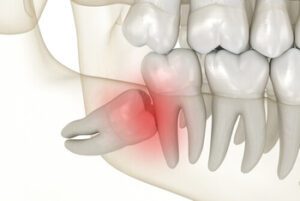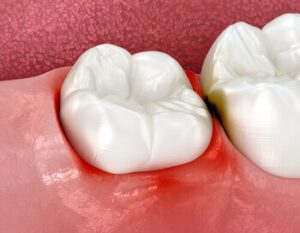Wisdom teeth are a natural part of dental development and an important milestone for many young adults. Although they do not cause problems for everyone, some cases may require extra attention to protect overall oral health. In situations where space is limited or alignment is affected, removal can help maintain comfort and function. Many people feel uncertain about the process, recovery, or wisdom teeth removal cost, which can lead to delays in care. Whether you are exploring preventive options or addressing current discomfort, having the right information makes a real difference. This guide offers a complete look at why wisdom teeth sometimes need attention and what to expect when planning for removal in Australia.
Why Do Wisdom Teeth Exist And What Makes Them A Problem?
While wisdom teeth served a purpose in ancient times, today they often cause more complications than convenience. Their late arrival and limited space in the jaw make them prone to becoming impacted or misaligned. Let’s explore why these teeth can turn into a source of dental concern.
Limited Space in the Jaw
Modern jaws are typically smaller than those of our ancestors, who had larger mouths to accommodate extra molars for grinding tough food. With this reduced space, wisdom teeth often struggle to erupt properly. When they push against other teeth or grow at awkward angles, they may require removal to prevent crowding or discomfort. If the jaw cannot accommodate the new molars, pain and swelling can develop over time. Misaligned wisdom teeth may also create gaps that trap food, encouraging bacterial growth. Early evaluation can identify potential space issues before they lead to more serious problems.
Impacted Wisdom Teeth

Risk of Gum Infection
Partially erupted wisdom teeth create openings in the gum tissue that are difficult to clean effectively. These gaps can allow bacteria to accumulate and lead to gum infection. Over time, inflamed gums or chronic infection may spread beyond the immediate area, impacting nearby tissues and oral structures.
Redness and persistent bad breath can sometimes signal the early stages of gum infection around wisdom teeth. If bacteria invade deeper pockets, they may contribute to gum disease, affecting other teeth as well. Treating infection early reduces the chance of long-term tissue damage.
Tooth Decay in Hard-to-Reach Areas
Wisdom teeth sit at the very back of the mouth, making them difficult to clean thoroughly. Even with regular brushing and flossing, food particles and bacteria can collect around them. This can lead to tooth decay not only in the wisdom tooth itself but also in adjacent teeth that are otherwise healthy.
Decay that begins unnoticed near a wisdom tooth can quickly spread if the area remains untreated. In some cases, both the wisdom tooth and the neighbouring molar may require dental work to repair damage. Early removal can lower the risk of cavities developing in hard-to-reach spaces.
Pressure on Nearby Teeth
If four wisdom teeth attempt to emerge at once, the pressure inside the jaw increases significantly. This often results in discomfort or shifting of adjacent teeth, particularly if orthodontic work has already been done. In such cases, removing wisdom teeth early helps preserve the results of previous dental treatments. Shifting teeth can also affect how the upper and lower jaws align when biting or chewing. Crowded teeth may lead to uneven wear patterns that can damage the enamel over time. Timely removal reduces pressure and supports a balanced, comfortable bite.
What Is the Wisdom Teeth Removal Cost?
Simple wisdom teeth removals in Australia usually cost about $225 per tooth, while surgical extractions often begin at $350. The total expense can vary depending on the tooth’s position and the complexity of the removal. It’s important to meet with a dental professional for an accurate breakdown of expected costs.
Which Factors Change The Price Of Removing Wisdom Teeth?
Understanding the cost of wisdom teeth removal involves more than just looking at numbers. The price you pay for a dental bridge is shaped by a combination of personal needs and treatment specifics. Knowing what affects the cost helps you plan with more confidence.
Number of Teeth to Be Removed
Removing a single tooth is less expensive than removing multiple wisdom teeth at once. The cost increases with each additional tooth due to extended procedure time, additional materials, and longer recovery. While some patients only need one extraction, many require all four wisdom teeth removed in a single session. If all four wisdom teeth are removed together, it can reduce total treatment time compared to doing them individually. Discussing your full treatment plan upfront can give a clearer picture of the total expenses involved.
Type of Extraction Required
Simple tooth extraction tends to be more affordable than surgical options. A non-impacted wisdom tooth can often be removed with minimal intervention, while impacted or angled teeth may require complex wisdom teeth removal techniques. The complexity of the procedure affects both preparation and time spent in the dental chair. Surgical extractions often involve additional planning, such as imaging and specialised equipment. In cases where bone removal is needed, it may add to the overall cost and recovery time. Early assessment of tooth position can sometimes prevent a simple case from becoming more complicated later.
Choice of Anaesthesia
The type of anaesthesia used has a direct impact on the overall cost. A local anaesthetic is included in most standard procedures, but general anaesthesia or sedation will add to your bill. These additional options are typically recommended for nervous patients or complex surgical procedures requiring longer treatment times. Sedation options provide added comfort but must be administered and monitored by qualified professionals. Understanding your options early can help you decide which approach matches your comfort level and budget.
Location and Type of Clinic
The clinic you choose also influences the wisdom tooth removal cost. Public dental services may offer reduced pricing, but patients may face longer waiting times. On the other hand, private dental clinics provide faster access and more flexible appointment options, though these typically come with higher out-of-pocket expenses. Urban clinics often have different pricing structures compared to regional or rural clinics. Practices with advanced technologies like 3D imaging may also have slightly higher fees. Comparing service inclusions rather than just the basic price can help you understand the value offered.
Your Private Health Insurance Cover
Your health insurance policy can help lower the teeth removal cost depending on your level of cover and whether you’ve served the relevant waiting period. Some policies will reimburse part of the wisdom tooth extraction costs under major dental treatments. It’s important to understand what dental procedures are included in your plan before booking your appointment. Reading the fine print can reveal whether general anaesthesia are partially covered. Verifying the exact benefits ahead of time avoids unexpected out-of-pocket expenses after wisdom tooth removal surgery.
Curious About The Process? Here’s How Wisdom Teeth Are Removed
Knowing what happens during the wisdom tooth removal procedure can help ease uncertainty and prepare you for each stage. While the specifics may vary depending on the case, the following steps outline a typical treatment experience.
Pre-Treatment Consultation

A clear treatment plan will be mapped out based on your individual needs. You may also receive advice on how to prepare for the procedure, such as adjusting any medications or fasting beforehand.
Administering Anaesthetic
Your dental team will apply an anaesthetic to the targeted area, helping you stay relaxed and stress-free during the procedure. For surgical wisdom procedures or patients with anxiety, general anaesthesia may be offered. The dentist ensures you are comfortable and prepared before starting the removal.
Monitoring equipment may be used to track vital signs throughout the procedure for added safety. Clear communication is maintained during the early stages to ensure you remain relaxed and informed.
Performing the Extraction
The technique used depends on whether the tooth is fully erupted or impacted. A simple extraction may involve gently loosening the tooth with specialised tools. In more complex cases, a surgical wisdom tooth removal may require an incision in the gum tissue or sectioning of the tooth for easier removal.
Care is taken to minimise the impact on surrounding gum tissue and nearby teeth. The goal is to remove the tooth as smoothly as possible while reducing potential trauma to the area.
Cleaning the Site
Once the tooth has been removed, the area is cleaned to remove any remaining bacteria or debris. If necessary, dissolvable stitches are placed to assist healing. After the tooth is extracted, the dentist places clean gauze over the site to manage bleeding and assist in starting the healing process. Extra care is taken to ensure no fragments are left behind that could cause irritation later. Cleaning the site thoroughly promotes faster recovery and reduces the risk of post-operative infection.
Post-Procedure Monitoring
After the tooth removal is complete, you’ll be given time to rest before discharge. Your provider will share aftercare instructions to follow at home, including how to manage pain, swelling, and eating habits. To support smooth healing, a check-up could be scheduled where your dentist examines the site and removes stitches if they have not dissolved on their own. Maintaining open communication with your clinic ensures you have support throughout the healing process.
Wondering What Recovery Looks Like After Wisdom Tooth Removal?
Recovery plays a big role in your overall experience. While everyone heals differently, following proper care guidelines makes a major difference. Here’s what to expect after removing wisdom teeth and how to support the healing process.
Managing Swelling and Discomfort
Swelling is common in the first few days following teeth surgery. Applying an ice pack to the outside of your cheek for short intervals can help reduce inflammation. Mild discomfort is usually managed with over-the-counter medication, though your dental provider may prescribe something stronger if needed.
Short walks around the house can help boost circulation without straining the healing area. Make sure to rest with your head slightly elevated to minimise swelling. It’s also a good idea to limit talking as much as possible during the first day to avoid jaw pressure.
Eating the Right Foods
For the first few days after surgery, it’s recommended to eat soft foods like yoghurt, scrambled eggs, and blended soups. Avoid chewing near the tooth extraction site to prevent pressure on healing gum tissue. It’s also important to stay away from hot drinks and spicy foods, which can irritate inflamed gums.
Smoothies made with non-acidic fruits can be a nutritious and gentle option. Try to avoid using a straw, even with soft foods, to protect the blood clot. Gradually reintroduce firmer foods only when chewing feels comfortable and free from tension.
Keeping the Area Clean
Good hygiene is essential for preventing infection. Your dental clinic may recommend gently rinsing with salt water after 24 hours to clean the area without disturbing the clot. Brushing should continue, but care should be taken around the surgical site to stop irritation or accidental contact with stitches.
Choose a soft-bristled toothbrush to minimise pressure on sensitive areas. Tilt your head slightly when rinsing to prevent aggressive swishing near the extraction site. Always follow any extra instructions given after the procedure to ensure thorough but gentle cleaning.
Avoiding Dry Socket

Stick to slow, gentle movements when brushing and eating to protect the healing site. If you sneeze, try to do so with your mouth open to reduce internal pressure. Keeping yourself hydrated with small sips of water also helps maintain overall oral health during recovery.
Signs to Watch For
While most people heal without issues, there are signs that warrant immediate attention. Persistent bleeding, worsening pain, or signs of gum infection like pus or swelling may indicate a complication. If you notice anything unusual, contact your provider to prevent further dental problems.
Monitor your jaw movement to ensure you can open and close it without increased stiffness. Pay attention to changes in taste or unusual odours, which may suggest infection. A rise in body temperature could be another early warning sign that needs professional review.
Returning to Normal Activities
Following wisdom teeth removal, patients often return to light activities fairly quickly, but recovery times vary by case. High-intensity workouts and heavy lifting should be paused to support the healing process. Follow your provider’s advice to ensure a smooth return to normal.
Starting with light activities like walking can help speed up recovery without putting strain on the surgical site. Always listen to your body, and rest if you feel discomfort or increased swelling. Returning to a balanced diet and hydration routine also helps energy levels bounce back quickly.
Call Us to Discuss Your Wisdom Teeth Concerns
Removing wisdom teeth is one of the most common dental procedures performed in Australia, and for good reason. These molars often cause discomfort, crowding, and infection when left untreated. While the wisdom teeth removal cost varies depending on your case, the benefits of early intervention are clear. With the right care and support, recovery is straightforward, and the results can help protect your oral health for years to come. If you’re experiencing wisdom teeth pain or simply want to explore your options, contact our dental clinic at (02) 6105 9853 to book a consultation and get personalised advice.
Note: Any surgical or invasive procedure carries risks. Before proceeding, you should seek a second opinion from an appropriately qualified health practitioner.
References
https://www.ncbi.nlm.nih.gov/books/NBK279590/
https://www.healthdirect.gov.au/surgery/removing-wisdom-teeth

